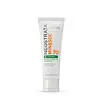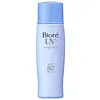What's inside
What's inside
 Key Ingredients
Key Ingredients

 Benefits
Benefits

 Concerns
Concerns

 Ingredients Side-by-side
Ingredients Side-by-side

Water
Skin ConditioningHomosalate
Skin ConditioningSilica
AbrasiveOctocrylene
UV AbsorberEthylhexyl Salicylate
UV AbsorberButyl Methoxydibenzoylmethane
UV AbsorberAluminum Starch Octenylsuccinate
AbsorbentAcetyl Glucosamine
Skin ConditioningEthylhexyl Triazone
UV AbsorberMethylene Bis-Benzotriazolyl Tetramethylbutylphenol
UV FilterTriacontanyl Pvp
HumectantDimethicone
EmollientCaprylyl Methicone
Skin ConditioningSodium Potassium Aluminum Silicate
Glyceryl Stearate
EmollientIsononyl Isononanoate
EmollientPEG-100 Stearate
Potassium Cetyl Phosphate
EmulsifyingStearyl Alcohol
EmollientAlcohol
AntimicrobialPhenoxyethanol
PreservativeHydroxyacetophenone
AntioxidantBis-Ethylhexyloxyphenol Methoxyphenyl Triazine
Skin ConditioningTitanium Dioxide
Cosmetic ColorantDimethicone Crosspolymer
Emulsion StabilisingParfum
MaskingAcrylates/C10-30 Alkyl Acrylate Crosspolymer
Emulsion StabilisingCapryloyl Glycine
CleansingDisodium EDTA
Tocopheryl Acetate
AntioxidantChrysanthemum Parthenium Flower/Leaf/Stem Juice
AntioxidantSarcosine
Skin ConditioningCinnamomum Zeylanicum Bark Extract
AntimicrobialWater, Homosalate, Silica, Octocrylene, Ethylhexyl Salicylate, Butyl Methoxydibenzoylmethane, Aluminum Starch Octenylsuccinate, Acetyl Glucosamine, Ethylhexyl Triazone, Methylene Bis-Benzotriazolyl Tetramethylbutylphenol, Triacontanyl Pvp, Dimethicone, Caprylyl Methicone, Sodium Potassium Aluminum Silicate, Glyceryl Stearate, Isononyl Isononanoate, PEG-100 Stearate, Potassium Cetyl Phosphate, Stearyl Alcohol, Alcohol, Phenoxyethanol, Hydroxyacetophenone, Bis-Ethylhexyloxyphenol Methoxyphenyl Triazine, Titanium Dioxide, Dimethicone Crosspolymer, Parfum, Acrylates/C10-30 Alkyl Acrylate Crosspolymer, Capryloyl Glycine, Disodium EDTA, Tocopheryl Acetate, Chrysanthemum Parthenium Flower/Leaf/Stem Juice, Sarcosine, Cinnamomum Zeylanicum Bark Extract
Cyclopentasiloxane
EmollientZinc Oxide
Cosmetic ColorantWater
Skin ConditioningAlcohol
AntimicrobialEthylhexyl Methoxycinnamate
UV AbsorberLauryl Methacrylate/Sodium Methacrylate Crosspolymer
Dimethicone
EmollientHydrogenated Polyisobutene
EmollientIsopropyl Palmitate
EmollientDiethylamino Hydroxybenzoyl Hexyl Benzoate
UV FilterTalc
AbrasiveNeopentyl Glycol Dicaprate
EmollientTitanium Dioxide
Cosmetic ColorantGlycerin
HumectantBis-Ethylhexyloxyphenol Methoxyphenyl Triazine
Skin ConditioningPEG-12 Dimethicone
Skin ConditioningTriethoxycaprylylsilane
PEG-3 Dimethicone
Skin ConditioningPolysilicone-9
Vinyldimethicone
Phenoxyethanol
PreservativeAluminum Hydroxide
EmollientTrimethylsiloxysilicate
EmollientStearic Acid
CleansingPolypropylsilsesquioxane
Methicone
EmollientParfum
MaskingBHT
AntioxidantTocopherol
AntioxidantSodium Hyaluronate
HumectantMethylparaben
PreservativeCyclopentasiloxane, Zinc Oxide, Water, Alcohol, Ethylhexyl Methoxycinnamate, Lauryl Methacrylate/Sodium Methacrylate Crosspolymer, Dimethicone, Hydrogenated Polyisobutene, Isopropyl Palmitate, Diethylamino Hydroxybenzoyl Hexyl Benzoate, Talc, Neopentyl Glycol Dicaprate, Titanium Dioxide, Glycerin, Bis-Ethylhexyloxyphenol Methoxyphenyl Triazine, PEG-12 Dimethicone, Triethoxycaprylylsilane, PEG-3 Dimethicone, Polysilicone-9, Vinyldimethicone, Phenoxyethanol, Aluminum Hydroxide, Trimethylsiloxysilicate, Stearic Acid, Polypropylsilsesquioxane, Methicone, Parfum, BHT, Tocopherol, Sodium Hyaluronate, Methylparaben
 Reviews
Reviews

Ingredients Explained
These ingredients are found in both products.
Ingredients higher up in an ingredient list are typically present in a larger amount.
Alcohol comes in many different forms. Different types of alcohol will have different effects on skin. This ingredient is usually an astringent alcohol.
These alcohols are drying on the skin. They may strip away your skin's natural oils and even damage your skin barrier. Astringent alcohols may also irritate skin.
Other types of astringent alcohols include:
According to the National Rosacea Society based in the US, you should be mindful of products with these alcohols in the top half of ingredients.
Any type of sanitizing product will have high amounts of alcohol to help kill bacteria and viruses.
Fatty alcohols come from plant oils such as coconut oil. These can help hydrate the skin and are non-irritating. Some fatty alcohols include cetyl and stearyl alcohol.
Learn more about AlcoholYou might know this ingredient as Tinosorb S or Bemotrizinol. It is a UV filter that covers both UVA and UVB rays.
This ingredient has two peak UV absorption peaks ( 310 and 340 nm) and is able to absorb both UV-A and UV-B rays. This ingredient works by preventing UV rays from reaching and damaging your skin.
On top of that - it is highly photostable and helps prevent the photodegration of other sunscreen ingredients such as avobenzone.
Tinosorb S is allowed in the EU, Australia, and Asia. It is close to being approved by the FDA and we'll hopefully get this ingredient in the U.S. by late 2025.
Fun fact: Tinosorb S is the most effective UV absorber at maximum concentration (measured by SPF) permitted in the EU.
This ingredient is oil-soluble, so your oil-cleansers will take this right off at night.
Learn more about Bis-Ethylhexyloxyphenol Methoxyphenyl TriazineDimethicone is a type of synthetic silicone created from natural materials such as quartz.
What it does:
Dimethicone comes in different viscosities:
Depending on the viscosity, dimethicone has different properties.
Ingredients lists don't always show which type is used, so we recommend reaching out to the brand if you have questions about the viscosity.
This ingredient is unlikely to cause irritation because it does not get absorbed into skin. However, people with silicone allergies should be careful about using this ingredient.
Note: Dimethicone may contribute to pilling. This is because it is not oil or water soluble, so pilling may occur when layered with products. When mixed with heavy oils in a formula, the outcome is also quite greasy.
Learn more about DimethiconeParfum is a catch-all term for an ingredient or more that is used to give a scent to products.
Also called "fragrance", this ingredient can be a blend of hundreds of chemicals or plant oils. This means every product with "fragrance" or "parfum" in the ingredients list is a different mixture.
For instance, Habanolide is a proprietary trade name for a specific aroma chemical. When used as a fragrance ingredient in cosmetics, most aroma chemicals fall under the broad labeling category of “FRAGRANCE” or “PARFUM” according to EU and US regulations.
The term 'parfum' or 'fragrance' is not regulated in many countries. In many cases, it is up to the brand to define this term.
For instance, many brands choose to label themselves as "fragrance-free" because they are not using synthetic fragrances. However, their products may still contain ingredients such as essential oils that are considered a fragrance by INCI standards.
One example is Calendula flower extract. Calendula is an essential oil that still imparts a scent or 'fragrance'.
Depending on the blend, the ingredients in the mixture can cause allergies and sensitivities on the skin. Some ingredients that are known EU allergens include linalool and citronellol.
Parfum can also be used to mask or cover an unpleasant scent.
The bottom line is: not all fragrances/parfum/ingredients are created equally. If you are worried about fragrances, we recommend taking a closer look at an ingredient. And of course, we always recommend speaking with a professional.
Learn more about ParfumPhenoxyethanol is a preservative that has germicide, antimicrobial, and aromatic properties. Studies show that phenoxyethanol can prevent microbial growth. By itself, it has a scent that is similar to that of a rose.
It's often used in formulations along with Caprylyl Glycol to preserve the shelf life of products.
Titanium dioxide is a mineral UV filter widely used in sunscreens and cosmetics.
It is one of only two UV filters officially classified as “mineral” by regulatory agencies, the other being zinc oxide.
Titanium dioxide provides broad-spectrum protection mostly in the UVB and UVAII range, with some protection in the UVAI range.
While its UVA protection isn’t as strong as zinc oxide’s, the difference is minor.
A common myth is that mineral UV filters reflect UV light. However, modern research shows titanium dioxide absorbs UV radiation like chemical filters (~95% absorption & 5% reflection).
Thanks to its non-irritating nature, titanium dioxide is suitable for sensitive, acne-prone, or redness-prone skin. It is unlikely to cause "eye sting" like other sunscreen ingredients.
A major drawback of this ingredient is its white cast and thick texture. This is why mineral sunscreens often leave a white cast and are less cosmetically elegant than chemical/hybrid sunscreens.
To improve white cast and spreadability, micronized or nano-sized titanium dioxide is often used.
There are ongoing concerns surrounding nano-titanium oxide's impact on marine ecosystems.
There is no conclusive evidence that any form of titanium oxide (or any other sunscreen ingredients) will cause harm to marine ecosystems or coral reefs. The science is still developing but many consumers are keeping a close eye on this issue.
Please note, many destinations have reef-safety sunscreen rules. For instance, the U.S. Virgin Islands advises all visitors to use non-nano mineral sunscreens.
Nano mineral sunscreens once raised safety concerns about absorption into skin.
Extensive research has shown that they do not penetrate healthy or damaged skin; they remain safely on the surface and the top layer of dead skin (stratum corneum).
You'll likely find titanium dioxide bundled with alumina, silica, or dimethicone. These ingredients help make titanium dioxide highly photostable; this prevents it from interacting with other formula components under UV light.
Learn more about Titanium DioxideWater. It's the most common cosmetic ingredient of all. You'll usually see it at the top of ingredient lists, meaning that it makes up the largest part of the product.
So why is it so popular? Water most often acts as a solvent - this means that it helps dissolve other ingredients into the formulation.
You'll also recognize water as that liquid we all need to stay alive. If you see this, drink a glass of water. Stay hydrated!
Learn more about Water